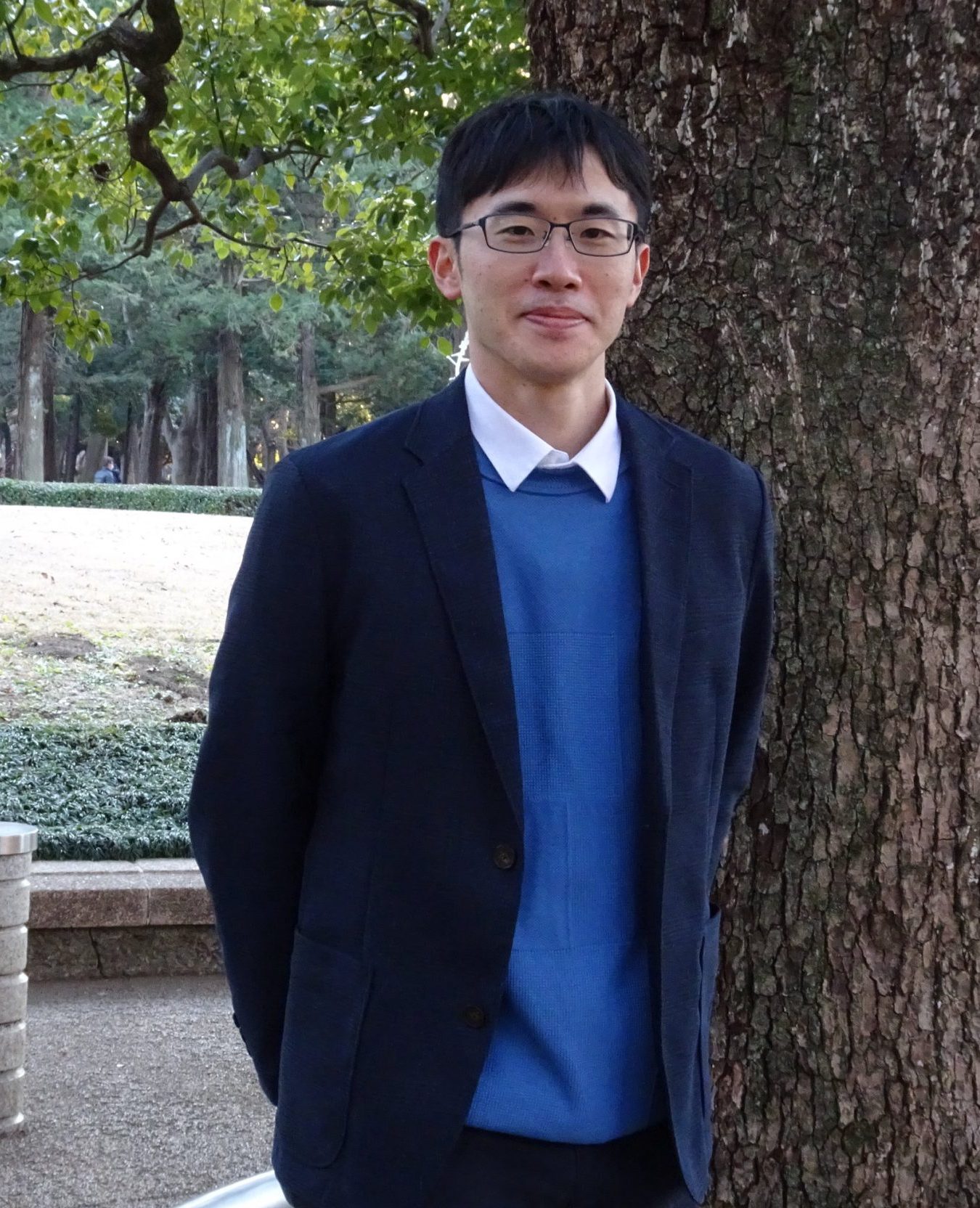Research Contents
My research focuses on the analysis of real-world physical systems that exhibit nonlinear phenomena by using applied mathematics and numerical methods. My approach to these problems is based on concepts from physics as well as mathematical engineering, e.g., system modeling, dynamic analysis, signal processing, and controller design. I deal with both microscale phenomena described by quantum mechanics and macroscale phenomena described by classical mechanics. In particular, I’m interseterd in synchronization phenomena, which can be observed in various systems, such as atomic ensembles, spiking neurons, walking steps, and chemical reactions.
Attractive Factors of My Research
It is fun to elucidate the simple, universal mathematical structures underlying complex nonlinear phenomena, just like solving a difficult mathematical puzzle. Also, we can develop useful and versatile engineering methods based on these mathematical structures.
Achievements
- Semiclassical phase reduction theory for quantum synchronization
We formulate the phase-reduction theory for quantum limit-cycle oscillators in the semiclassical regime. The phase-reduction theory has played a central role in analyzing the rhythmic dynamics of classical limit-cycle oscillators. This theory enables us to quantitatively approximate the dynamics of a nonlinear multi-dimensional limit-cycle oscillator by a simple one-dimensional phase equation, which has greatly facilitated systematic analysis of universal properties of limit-cycle oscillators, such as synchronization of oscillators with external periodic forcing, mutual synchronization between coupled oscillators, and the collective synchronization transition in a system of globally coupled phase oscillators. In this study, we generalize the conventional phase-reduction theory to quantum limit-cycle oscillators in the semiclassical regime where the quantum dynamics can be approximately described by a stochastic differential equation representing a system state in the phase space fluctuating along a deterministic classical trajectory due to small quantum noise. The developed semiclassical phase-reduction theory enables us to quantitatively approximate a quantum oscillator exhibiting stable limit-cycle oscillations by a simple one-dimensional phase equation, facilitating a systematic analysis of quantum synchronization in this regime. As a simple example, we analyze synchronization properties of a typical model of quantum limit-cycle oscillators subjected to a harmonic driving and approximately reconstruct the density matrix and power spectrum of the original quantum system from the reduced phase equation. Using the formulated semiclassical phase-reduction theory, we also consider optimal entrainment of a quantum nonlinear oscillator to a periodically modulated weak harmonic drive in the semiclassical regime. - Optimization of periodic input waveforms for global entrainment of weakly forced limit-cycle oscillators
We propose a general method for optimizing periodic input waveforms for global entrainment of weakly forced limit-cycle oscillators based on phase reduction and nonlinear programming. We derive averaged phase dynamics from the mathematical model of a limit-cycle oscillator driven by a weak periodic input and optimize the Fourier coefficients of the input waveform to maximize prescribed objective functions. In contrast to the optimization methods that rely on the calculus of variations, the proposed method can be applied to a wider class of optimization problems including global entrainment objectives. As an illustration, we consider two optimization problems, one for achieving fast global convergence of the oscillator to the entrained state and the other for realizing prescribed global phase distributions in a population of identical uncoupled noisy oscillators. We show that the proposed method can successfully yield optimal input waveforms to realize the desired states in both cases. - Structure identification and state initialization of spin networks with limited access
We provide two methods for structure identification and state initialization of spin networks accessible by only a single node. For reliable and consistent quantum information processing on quantum networks, the network structure must be fully known and a desired initial state must be accurately prepared on it. In this study, we provide two continuous measurement-based methods to achieve the above requirements for spin networks accessible by only a single node. First, we identify an unknown network graph structure based on continuous-time Bayesian updates. We numerically demonstrate that our graph estimator correctly identifies the true graph structure from five possible nominal graphs for three spin cases. Second, we propose a feedback control that deterministically drives an arbitrary mixed state to a spin-coherent state for network initialization. We numerically demonstrate that our feedback control can deterministically stabilize the spin-coherent states of the five spin networks.
Major Books and Papers
- Yuzuru Kato, Jinjie Zhu, Wataru Kurebayashi, Hiroya Nakao, Asymptotic phase and amplitude for classical and semiclassical stochastic oscillators via Koopman operator theory, Mathematics, Mathematics 9, 2188 (2021).
- Yuzuru Kato, Anatoly Zlotnik, Jr-Shin Li, Hiroya Nakao, Optimization of periodic input waveforms for global entrainment of weakly forced limit-cycle oscillators, Nonlinear Dynamics, 105, 2247‒2263 (2021).
- Yuzuru Kato, Hiroya Nakao, Quantum coherence resonance, New Journal of Physics, 23, 043018 1-10 (2021).
- Yuzuru Kato, Hiroya Nakao, Instantaneous phase synchronization of two decoupled quantum limit-cycle oscillators induced by conditional photon detection, Physical Review Research, 3, 013085 1-8 (2021).
- Yuzuru Kato, Hiroya Nakao, Enhancement of quantum synchronization via continuous measurement and feedback control, New Journal of Physics, 23, 013007 1-12 (2021).
- Yuzuru Kato, Hiroya Nakao, Semiclassical optimization of entrainment stability and phase coherence in weakly forced quantum limit-cycle oscillators, Physical Review E, 101, 012210 1-9 (2020).
- Yuzuru Kato, Naoki Yamamoto, Hiroya Nakao, Semiclassical phase reduction theory for quantum synchronization, Physical Review Research, 1, 033012 1-15 (2019).
- Yuzuru Kato, Naoki Yamamoto, Structure identification and state initialization of spin networks with limited access, New Journal of Physics, 16, 023024 1-19 (2014).

